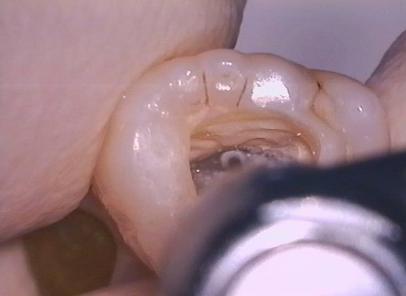
InformationPrimary endodontic treatment Endodontic retreatment Special treatments Endodontics step by stepProduct catalogueOrder and payment information Previous special offers Hand instruments Rotary instruments Operating Microscope General instruments Accessoires Filling materials MiscellaneousRemainingReferences Site map Presentations (RECOMMENDABLE!) Downloads Het Kanaal Links Endoplaza Forum MarketPlaza About Endoplaza Instructions for use website
|
Searching for the canal entrances
Here too, the operating microscope From this page you can order in our web shopto last chapter: Opening the element. Possible removal of the restoration to next chapter: Constructing the element in such a way that rubber dam can be easily placed |
